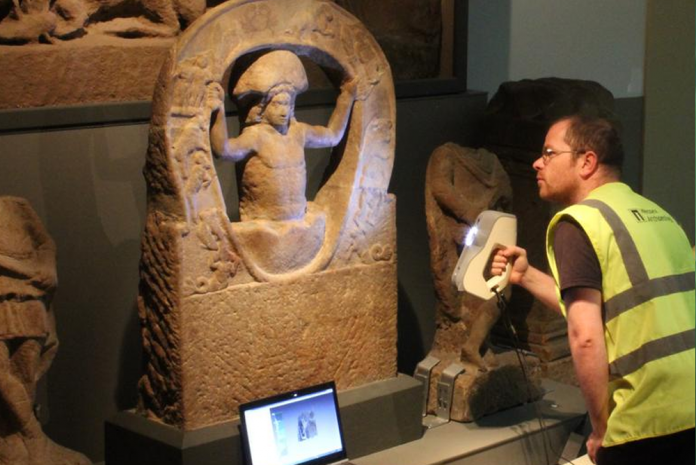Current Article Views: 176 views
One of the planned uses of these digital models will be for use as a teaching resource for initiatives such as their free online Massive Online Open Course Hadrian’s Wall:
Life on the Roman Frontier.
This week’s image shows two scans of related monuments, the Neptune and Oceanus Altars, both currently on display in the Great North Museum in Newcastle. They were found in the Tyne in 1875 and 1903 respectively and may have been dumped there deliberately. The front of the Neptune shaft is decorated with a depiction of a dolphin entwined with a trident, the two symbols of the god Neptune. He was the deity associated with rivers and fresh water by the Romans. The altar to Oceanus, also found in the River Tyne is decorated with his symbol, a ship’s anchor.
These two altars are thought to have been paired and to have formed part of a shrine on the Pons Aelius bridge across the Tyne at Newcastle, at the point where the two deities, Neptune of the river and Oceanus of the tidal waves of the sea, met. The bridge, and thereby the shrine, were thought to have been constructed on the order of the Emperor Hadrian when he visited Britain in AD 122. Both stones bear a dedication to their respective god and the inscription “”the Sixth Victorious Legion Loyal and Faithful (made this)”. The 6th Legion was active in Britain from 122 AD to the end of the Roman occupation.
For more information see:
By John McCarthy – Project Manager



